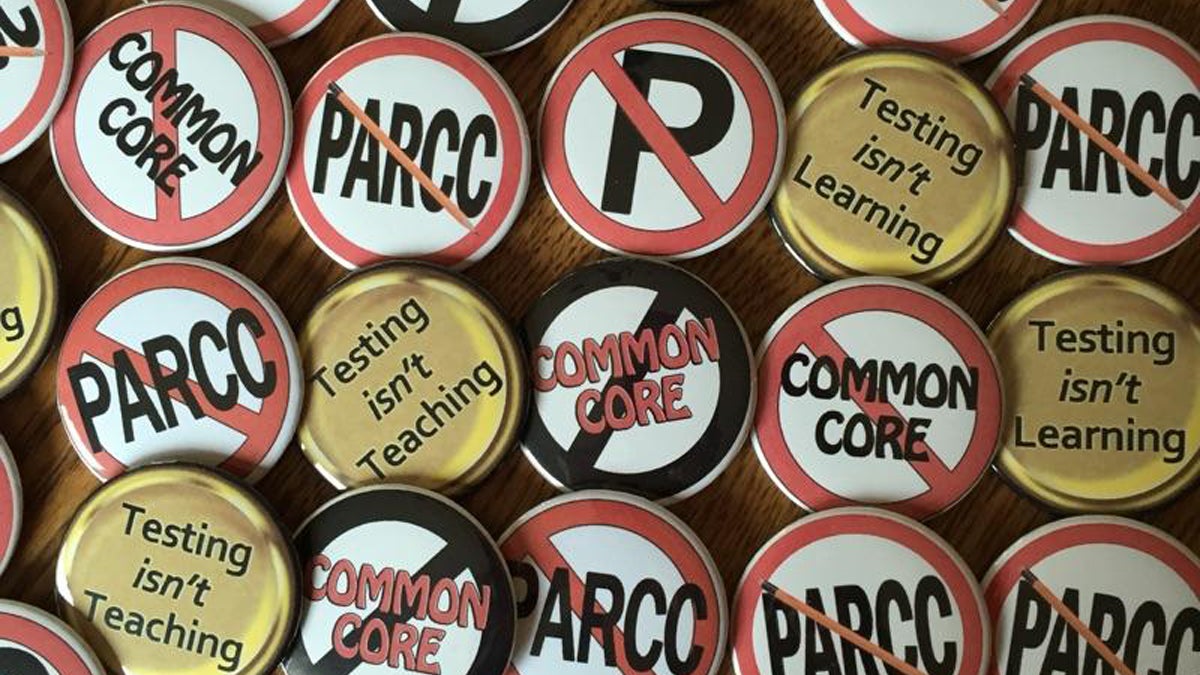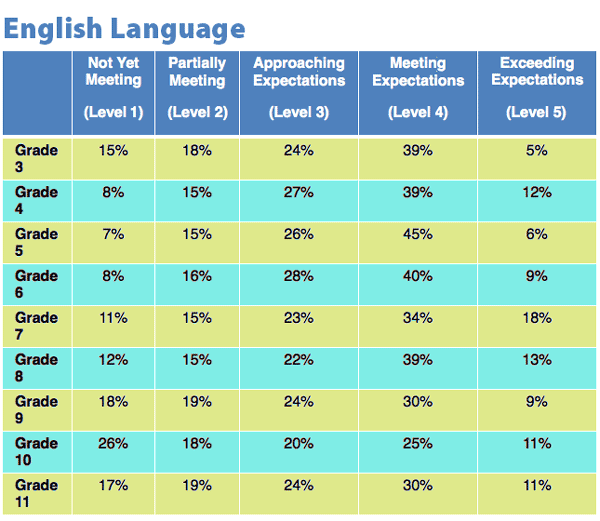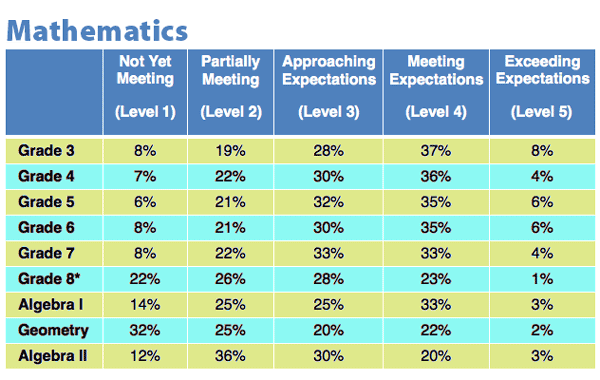First release of PARCC scores shows fewer students make the grade
Listen
Many parents and teachers have come out opposed to using the PARCC tests. (NewsWorks file photo)
The wait finally over, the Christie administration yesterday started rolling out the sobering results of the new PARCC testing.
It was an exercise that seemed as much political as informational.
The administration, in an elaborate presentation held at the headquarters of New Jersey Manufacturing Insurance in West Trenton, released the statewide scores on the new online testing that showed – as expected – a sharp drop-off in the percentage of New Jersey students meeting the new “expectations” for achievement.
The numbers were stark: Just 44 percent of third-graders and 36 percent of 10th-graders reached or exceeded PARCC’s grade-level marks in language arts.

And those were among the better results.
Math results aren’t good
Just 24 percent of high schoolers met the PARCC mark in geometry test, and 23 percent achieved the standard in Algebra II. No math numbers at any grade level topped 50 percent meeting “expectations” in the math tests.

It will be an autumn of reckoning in the state’s new era of testing, as officials and education leaders will try to put the best face on the results as a new starting point for New Jersey’s public schools.
Over and over, officials yesterday stressed these results couldn’t be compared to previous testing, where passing rates had been as high as 80 percent.
“We have to be very careful in comparing one test to another,” said state Education Commissioner David Hespe. “They are really not comparable.”
The results released yesterday did, in fact, provide an incomplete picture, with no details provided to show how different groups of students fared. The district-by-district and school-by-school results are still awaiting release, likely in early November, when individual students and families will also get their scores.
State leaders and a host of education and business groups allied to the new testing stressed that the results, once disseminated, will provide valuable information that hasn’t been available before.
“I’m able to take specific piece of information where I can draw back children who need to work on a specific area and can really hone in those skills,” said Lianne Markus, a Hope Township teacher who was part of the representation.
Indeed, it was an impressive show of support for the controversial new testing, with virtually all of the state’s major education groups represented yesterday, as well as all the major higher education sectors.
“I think it’s great just to have all the sectors of higher education on the same page,” said Eugene Cornacchia, president of St. Peter’s University.
NJEA warns testing was flawed
Nevertheless, there were some notable absences, too, led by the state’s teachers unions — especially the New Jersey Education Association. NJEA leaders, who were not invited to yesterday’s event, said the results should be treated with caution.
“Parents and policymakers alike should be very careful about drawing any conclusions from the data released today, or from the more detailed data that will be released in the coming weeks,” said NJEA President Wendell Steinhauer in a statement.
“As we have said from the beginning, the PARCC test is a deeply flawed assessment tool that was further compromised last year by widespread problems with technology and other issues associated with administering a new, unproven test statewide for the very first time.”
Nonetheless, there appears little going back now, with even the nomenclature taking a significant turn with the new tests.
Cut-off scores to be decided
Instead of the three tiers of the previous testing – which ranged from “partially proficient” to “advanced proficient” – the new exams have five separate categories that run from “not yet meeting” expectations to “exceeding” expectations.
In between are various gradations, with the top two of the five levels considered at or above grade level as determined by educators and other experts enlisted by the dozen-state PARCC consortium.
There is some wiggle room for each of the states when it comes to adhering to those designations, but Hespe said yesterday that he would recommend New Jersey follow PARCC’s guidelines in setting its own passing or “cut” scores.
That’s an especially important designation for high schools, where the PARCC cut-off could ultimately be the threshold for graduating or not.
The state Board of Education is expected to meet and decide on the “cut” scores next month.
“I will recommend that we rely on PARCC’s process, it was a very good process,” Hespe said afterward. “This is that promised comparability between states, and we are comfortable with that.”
Dana Egreczky has been a veteran of these debates as a senior official at the New Jersey Chamber of Commerce. She worked with the state a decade ago in trying to raise high school standards and again five years ago.
Egreczky was on hand yesterday for the latest iteration, and said she sees this chapter as more hopeful given what she termed the high quality of the latest test. But she said the politics hasn’t much changed, and the state will have a process to work through.
“Any change process is going to result in those outcomes, even in a multi-million dollar business, any time there are massive changes, there will be a cliff,” she said.
“It is part of the cycle of change, and we have to deal with it and get past it,” she said. “Politics always matters, but we need to forge through that.”
WHYY is your source for fact-based, in-depth journalism and information. As a nonprofit organization, we rely on financial support from readers like you. Please give today.


